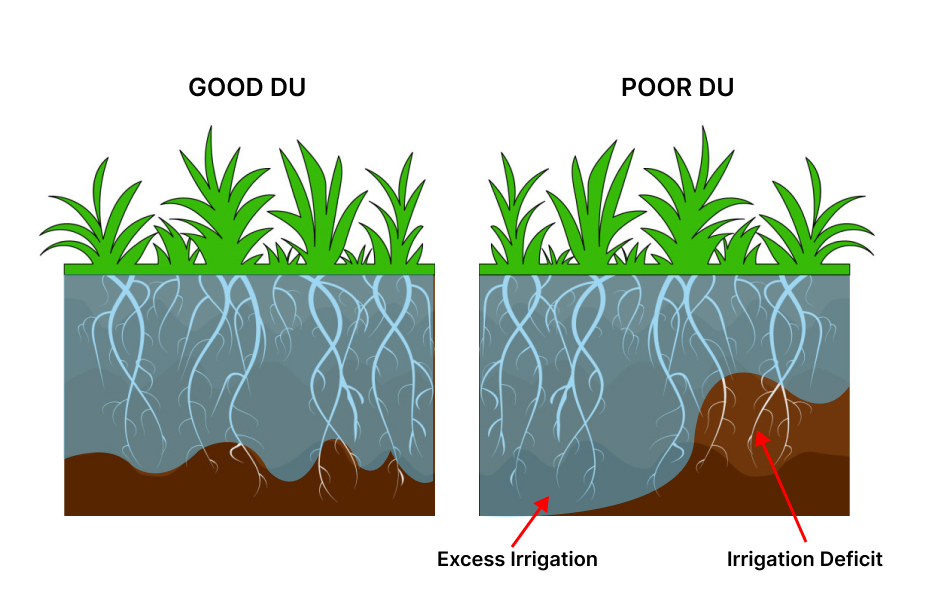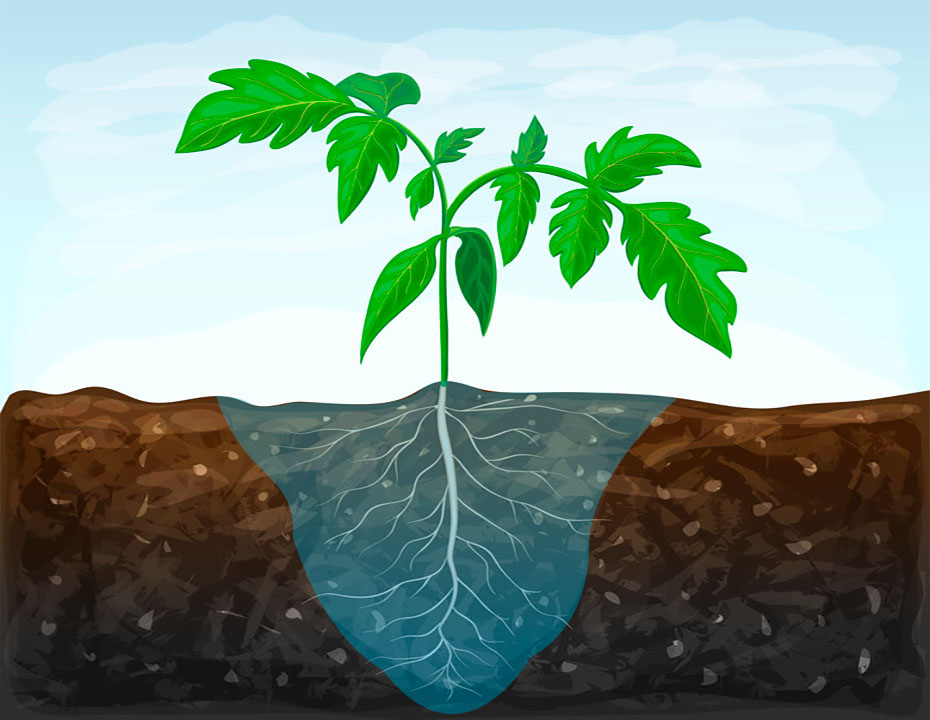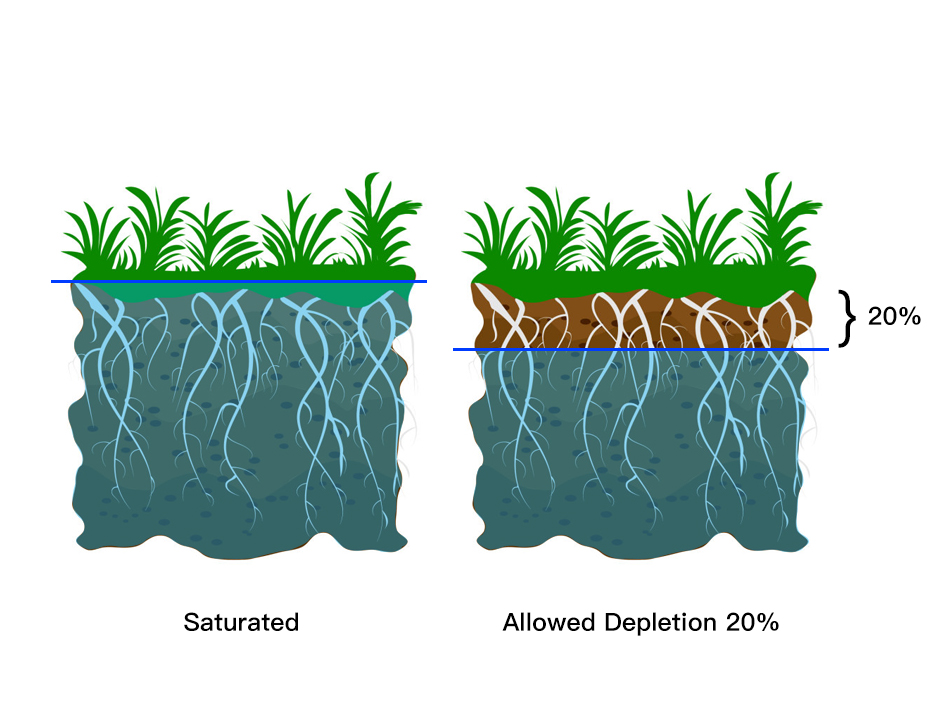If you are not very familiar with those less common zone parameters, this article will introduce how to edit the advanced settings of a zone and explain in detail the function of each setting. These advanced settings are mainly applied to ImoLaza's ET Smart Schedule. These settings can help ImoLaza calculate the duration and frequency of an irrigation schedule based on attributes like plants' water needs, application rate, and soil water holding capacity.
Advanced Zone Attributes
Root Zone Depth
The "root zone depth" refers to the effective depth in the soil from which a plant extracts water and nutrients. Root depth is an important parameter that determines a plant's water absorption capacity and irrigation requirement. Generally, the more developed the root system and the deeper the utilizable soil layer, the stronger the plant's ability to acquire water and nutrients. Calculating root depth requires considering factors like soil type, vegetation type, groundwater level, etc. Root depth also varies for different plant species. To obtain accurate root depth data, it is recommended to take samples using a soil probe, which minimizes soil disturbance and yields high quality samples. Specifically, take out a soil core containing roots from the probe, look for fine roots to determine the depth (in inches) from the top of the core to the deepest root near the bottom. This sampling procedure should be repeated at multiple locations in the test area to determine the average root depth.
Crop Coefficient
The crop coefficient can be seen as a tool to help ImoLaza and irrigation experts determine when and how much water to irrigate crops.
Different types of plants require different amounts of water at different growth stages. The crop coefficient represents how much water each type of crop needs at each growth stage, typically expressed as a decimal or a percentage. For example, a particular crop may require only a small amount of water during its early growth stage, resulting in a low crop coefficient. However, during the mid-growth stage, the same crop may need more water, leading to an increased crop coefficient. ImoLaza uses fixed crop coefficient values, which are derived from the annual average crop coefficient values for that type of plant as determined by the Food and Agriculture Organization (FAO) of the United Nations. If you are not an irrigation expert, it is not recommended to modify these parameters.
The controller uses the crop coefficient to develop irrigation schedules to ensure that crops receive adequate water without wasting water resources.
Application Rate
In the irrigation industry, "application rate" refers to the intensity of water application during irrigation or spray/drip irrigation. It is the speed at which an irrigation system applies water to the field, lawn or plant area over a period of time. It is usually expressed as the depth of water per unit of time, such as inches per hour or millimeters per hour.
Understanding application rates is crucial for determining irrigation system efficiency and water distribution. It helps decide how much water needs to be applied over a given period of time to meet crop or plant needs. Different types of irrigation systems (e.g. spray irrigation, drip irrigation, rotating sprinklers, etc.) apply water to the land at different rates. The main factors affecting application rate include sprinkler/emitter models, operating pressure, spacing, wind speed, etc. Moreover, the water supply capacity of the irrigation system also limits the application rate. A reasonable application rate can improve irrigation uniformity and avoid waste of water resources. When designing an irrigation system, various factors must be considered to select suitable sprinklers to achieve the required application rate. Monitoring and adjusting application rates can optimize irrigation effects.
- Sprinkler/emitter models - different models have different flow rates at the same pressure.
- Operating pressure - higher pressure leads to a higher flow rate through the sprinkler, resulting in a higher application rate.
- Sprinkler spacing - closer spacing leads to more uniform distribution and a higher application rate.
- Wind speed - high winds affect spray distribution, reducing application rate.
- The water supply capacity of the irrigation system also limits the application rate.
If you wanna figure out the application rate for your system, check out this article that shows how to calculate it.
How to Calculate the Application Rate?
Efficiency (DU)
Efficiency, also referred to as Application Efficiency or Distribution Uniformity (DU), is an important parameter that describes the ability of an irrigation system to distribute water resources evenly. It measures the relative evenness of water applied to each zone in the system.
DU is expressed as a percentage and typically ranges from 0% to 100%. A higher DU percentage indicates more uniform and efficient water distribution, while a lower percentage suggests uneven distribution.
Here are some of the key factors that affect the Distribution Uniformity (DU) of an irrigation system:
- Sprinkler type - Using different sprinkler patterns is a major factor affecting DU. Rotating sprinklers and micro-sprinklers generally have significantly higher DUs compared to impact sprinklers.
- Operating pressure - Variations in sprinkler operating pressure directly affect the evenness of water distribution. Excessively high or unstable pressures can severely reduce DU.
- Pipeline layout - Proper pipeline design helps reduce uneven pressure losses, which is critical for DU.
- Sprinkler spacing - Excessive spacing leads to uneven irrigation, while spacing too close causes resource waste. Proper spacing adjustment is very important.
- Flow rate adjustment - Ensuring each sprinkler's flow rate is finely tuned can directly optimize DU.
DU is typically calculated using the following formula:
DU (%) = Minimum irrigation amount / Average irrigation amount

Available Water
Available Water (AW) or Available Water Capacity (AWC) is the maximum amount of water that soil can store to be extracted by the plants. It is the water held between field capacity and the permanent wilting point. This capacity depends on soil texture and structure, with soils having a porous structure, like those rich in organic matter, capable of retaining more available water. Typically expressed as inches of water per inch of soil, it quantifies the reservoir of moisture accessible to plants in the root zone. Understanding available water capacity based on soil type and root depth is crucial for effective irrigation management, ensuring optimal crop water requirements are met.

Area
"Area" represents the size of the selected area. When your account is set to use "Gallon" or "Liter" instead of "Time" as the water unit, the controller calculates your water usage based on the area size and the type of sprinklers you have. Having an accurate area size helps you monitor your water consumption.
Allowed Depletion (MAD)
Management allowable depletion specifies the maximum amount of soil water the irrigation manager chooses to allow the crop to extract from the active rooting zone between irrigations. Only a portion of the available water-holding capacity is easily used by the crop before crop water stress develops.
For most landscape purposes, 50% MAD represents a reasonable overall value; For sensitive, shallow-rooted plants, or heavily compacted soils, a smaller depletion should be considered (30-50% MAD). For stress-tolerant plants, deep root zones or lighter soils, a larger depletion can be used (50-70% MAD).

If the above method still does not solve your problem, don't hesitate to get in touch with our technical support team directly through the following contact information. We will reply to you by email within 12h after receiving your message.
Email: Support@imolaza.com
